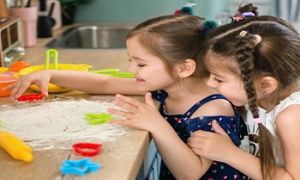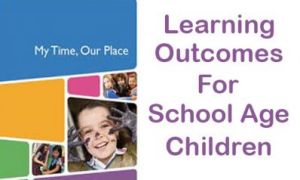

Men's Costumes Around The World Posters show the clothing of men from 27 different countries. These are great for children to see how men dress in different parts of the world. This is a great way to start open conversations on diversity. These are also great to use as part of a room display.
Women's Costumes Around The World Posters show the clothing of women from 27 different countries. These are great for children to see how women dress in different parts of the world. This is a great way to start open conversations on diversity. These are also great to use as part of a room display.
Costumes Around The World Posters show the costumes of 27 different countries. These are great for children to see how people dress in different parts of the world. Using this as a discussion point, you can talk about the similarities and differences of clothes from around the world and how it compares to how the children would normally dress. This is a great way to start open conversations on diversity. These are also great to use as part of a room display.
Learning about similarities and differences in people can be thought of as two sides of the same coin – that of appreciating what makes people different while respecting their fundamental humanity. The following article provides strategies on how to teach children about similarities and differences in people.
Anti-bias education in early childhood is about creating an inclusive environment where all children feel respected, valued, and empowered. The following article provides information on, Helping Children Through Bias, How Anti-Bias Education Can Be Implemented, Anti-bias Framework, How To Create An Inclusive Environment, Using Language That Avoids Stereotypes and more.
As an early childhood educator, you are entrusted with shaping children for the future. Creating a multicultural environment in the learning space is one of the most effective ways of helping children prepare for this world as they learn inclusive ways of thinking, working and being. The following article provides ideas and strategies for creating a multicultural environment in an early childhood setting.
The Common Words in Different Languages Posters list common words in the multicultural languages spoken throughout Australia. These are very helpful for Educators communicating with children where English isn't their first language and to also teach children common words in different languages.
The Children Of The World Matching Cards enable children to match the child card to their matching one. These cards represent children from around the world. This is a great visual awareness activity children can do. This will also show children the similarities and differences between others.
The Preschool Multicultural Support Program is designed to assist the inclusion of children from CALD and refugee backgrounds in quality preschool education and to build the cultural competency of early childhood educators. Eligible community and mobile preschool services can access 20 hours of FREE face-to-face multicultural support for any children who require assistance.
Respect for Diversity is one of the main principles that underpin the Belonging, Becoming and Being: Early Years Learning Framework for Australia. Thus it is mandatory for services and educators to use practice that incorporates diverse cultures, especially in monocultural classrooms where opportunities for practice diversity can appear limited. Here are some examples of ways diverse cultures can be embedded in everyday practice.
 As an Educator in Australia, your pay rate falls under the Children’s Services Award 2010. This award states the minimum amount that an employer can… Read More
As an Educator in Australia, your pay rate falls under the Children’s Services Award 2010. This award states the minimum amount that an employer can… Read More
 When working as a qualified Early Childhood Teacher (with a university degree) within a service, your rate of pay will come from the Educational Services… Read More
When working as a qualified Early Childhood Teacher (with a university degree) within a service, your rate of pay will come from the Educational Services… Read More
 When working as a Diploma Qualified Educator your pay rate is from the Children's Services Award 2010. This Award states your minimum rate of pay… Read More
When working as a Diploma Qualified Educator your pay rate is from the Children's Services Award 2010. This Award states your minimum rate of pay… Read More
 When working as a Cert 3 Qualified Educator, your pay rate is from the Children's Services Award 2010. This Award states your minimum rate of… Read More
When working as a Cert 3 Qualified Educator, your pay rate is from the Children's Services Award 2010. This Award states your minimum rate of… Read More
 Educational Leaders play a crucial role in their early childhood service by ensuring that the educational program aligns with best practices and supports the holistic… Read More
Educational Leaders play a crucial role in their early childhood service by ensuring that the educational program aligns with best practices and supports the holistic… Read More
 In early childhood education and care, ratios are more than a technicality—they are a frontline safeguard. Every child deserves responsive supervision, emotional connection, and developmental… Read More
In early childhood education and care, ratios are more than a technicality—they are a frontline safeguard. Every child deserves responsive supervision, emotional connection, and developmental… Read More
 With the new national child safety reforms kicking in on 1 September 2025, early childhood services like yours have a real opportunity to lead the… Read More
With the new national child safety reforms kicking in on 1 September 2025, early childhood services like yours have a real opportunity to lead the… Read More
 Here’s a comprehensive Mobile Phone and Smart Watch Policy tailored for early childhood education and care (ECEC) services in Australia, aligned with the latest 2025… Read More
Here’s a comprehensive Mobile Phone and Smart Watch Policy tailored for early childhood education and care (ECEC) services in Australia, aligned with the latest 2025… Read More
 The Sea of Fish Challenge is a national initiative that invites children, educators, families, and communities to create and display fish artworks as a symbol… Read More
The Sea of Fish Challenge is a national initiative that invites children, educators, families, and communities to create and display fish artworks as a symbol… Read More
 Across the early childhood education and care sector, educators are sounding the alarm: current staffing ratios are insufficient to deliver safe, meaningful, and developmentally appropriate… Read More
Across the early childhood education and care sector, educators are sounding the alarm: current staffing ratios are insufficient to deliver safe, meaningful, and developmentally appropriate… Read More

Here's a practical Quality Area 5 Cheat Sheet that includes key standards, element breakdowns, and...
See more...
The Kindness Curriculum presents activities designed to build the attributes of empathy, gratitude, perspective, honesty...
See more...
Here is the list of the MTOP Learning Outcomes that you can use as a...
See more...© 2009-2025 Aussie Childcare Network Pty Ltd. All Rights Reserved.

